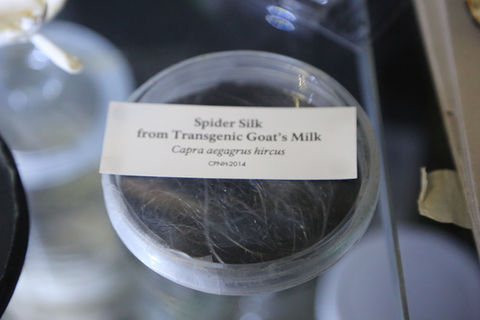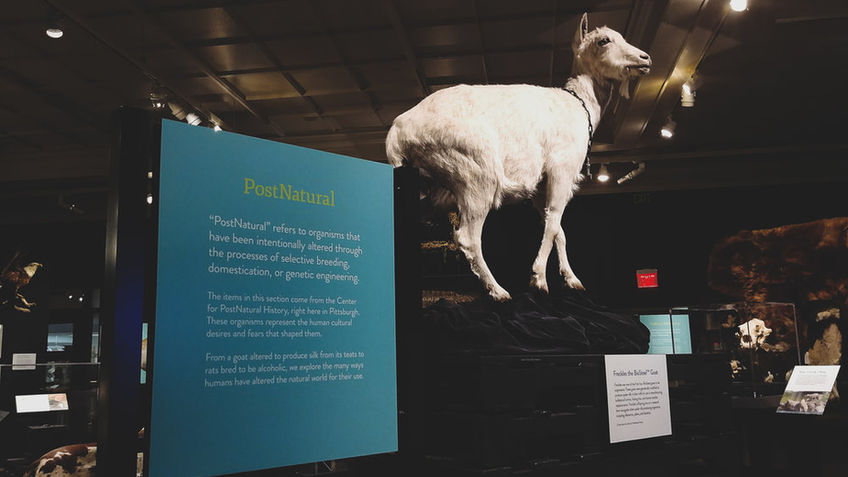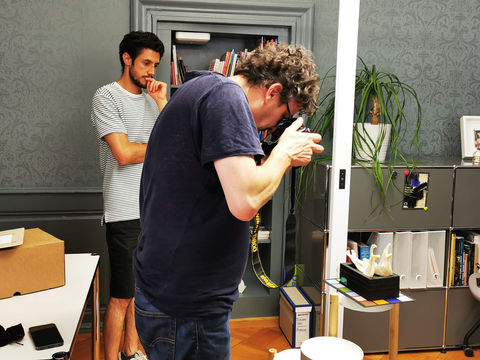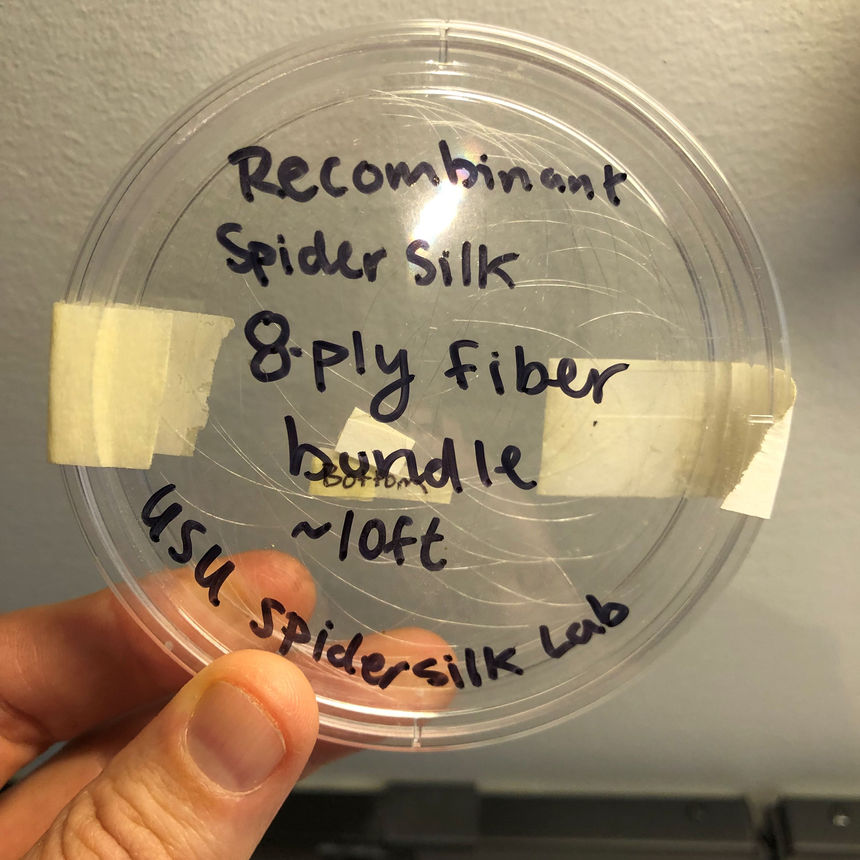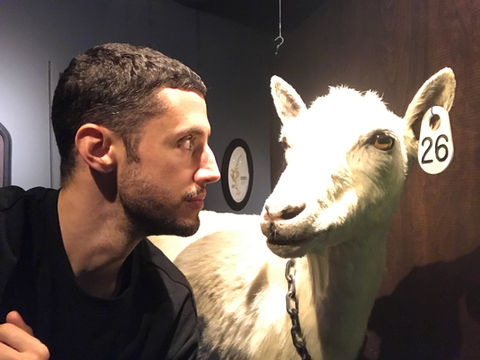
MUSEUM OF POSTNATURAL HISTORY

BioSteel™
transgenic spider goat
This is the lower jaw of a so-called "Biosteel goat" which was originally engineered to produce spider silk for military, medical, and commercial purposes.
The silk from certain spiders is known to be both elastic and incredibly strong. The interest in this material with exceptional properties has led to numerous research efforts aiming to use genetic engineering to facilitate its industrial-scale production. The first step in this direction was taken in 1990 by Randy Lewis, then a professor at the University of Wyoming. By studying a spider, the golden orb-weaver (Trichonephila clavipes), he managed to identify and clone two genes responsible for the proteins constituting spider silk.
A few years later, the Canadian company Nexia Biotechnologies, based in Montreal, Canada, acquired the patent filed by Lewis. Its founder and president, Jeffrey Turner, from McGill University, had the idea of transferring the genes into goats so that they could produce the proteins in their milk.
BioSteel Goat
Photo credit: Richard Pell. Center for PostNatural History


By 2002, the company managed around 150 transgenic goats. One goat produced up to 20 grams of silk proteins (per liter of milk), which then needed to be filtered and processed. The resulting fiber was patented under the name BioSteel. While its potential applications were numerous, including in the textile, medical, automotive, sports, and even musical sectors, it was primarily aimed at the military sector, with the intention to design and produce specialized military applications, such as bulletproof vests and parachutes. In fact, the U.S. military has been the main driver of research on transgenic spider silk.
Nexia went bankrupt in 2009. Its production had been insufficient in quantity and quality. The remaining goats were transferred to the lab of Dr. Randy Lewis, now in Logan, Utah, where they continue to serve as research organisms, producing spider silk alongside other other GMOs used for this purpose, including silkworms and bacteria.
The company also sold two transgenic goats - Sugar and Spice - to the Canada Agriculture Museum in Ottawa, which reportedly removed them from its exhibition space in 2013 due to public pressure. The only mounted specimen of a Biosteel goat accessible to the public is located at the Center for PostNatural History in Pittsburgh (picture to the right).

